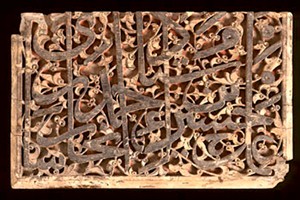
History of Science and Technology in Islam
The Geber Problem
The Origin of Liber Fornacum
Introduction: The literature on Jabir’s Latin works is extensive. In
this and later Brief Notes we intend now and then to direct the
attention of historians of science to some revealing materials that can
help in illuminating the path of research into what is called the Geber
Problem. Briefly, the question is the following: Who wrote the five
disputed Latin alchemical works that are ascribed to Geber? Were they
written by Jabir ibn Hayyan or by a Latin writer who ascribed them to
him? [1]
Liber Fornacum The longest and best known of the writings of Geber is
the summa perfetionis magisterii. The Summa makes reference to two other
books, De investigatione perfectionis [2], and Liber fornacum
[3]. The
first of these accompanies the Summa in a thirteenth-century manuscript,
but the second (Liber fornacum) is extant in a fifteenth century
manuscript in Venice and in two seventeenth century manuscripts in
London and Glasgo, and the three mention the name of the translator. It
was printed in a sixteenth-century edition of Geber's works and the name
of the translator was given. [4] There may be more manuscripts also. De investigatione, De inventione, and Liber fornacum
[5] all cite the
Summa. The Testamentum is mentioned in the Liber fornacum (which is
itself mentioned in the Summa).
From this maze of citations it is evident that the Liber Fornacum is a
main work among this group of Geber’s Latin works. It is mentioned in
the Summa and the Summa is mentioned in it.
The oldest known extant MS of Venice mentions Rodericum Yspanensem as
the translator. The two other manuscripts from the seventeenth century
in the British Library and in Glasgow give the name of Rodogero
Hispalensi as the translator. The details of these manuscripts are as
follow [6]:
- Venice, Biblioteca Marciana MS. Lat. VI. 215. [3519.] 297 folios.
Parchment. Octavo
Geber. Liber de inventione perfectionis. Liber Fornacum translatum. per
Rodericum Yspanensem.
This manuscript was written by 'Theodoricum Ghysiberti de Luneborg de
Saxonia, anno 1475'.]
- Ferguson MS. 232.
78 folios. 285x208mm. 17th Century. In Latin.
f72v-76 Geberi Arabis Philosophi sollertissimi rerumque naturalium
peritissimi, liber fornacum ad exerienda [...] pertinentium interprete
Rodogero Hispalensi.
- British Library MS. Sloane 1068.
Paper, 389 folios. 17th Century
6. Ejusdem 'liber fornacum, ad exercendam chemiam pertinentium;
interprete Rodogero Hispalensi'. f.369. [Printed Basiliae, 1561, p.193.
There is also a manuscript at Wellcome Institute which has to be
investigated:
London, Wellcome Institute MS. 384.
16 + 338 folios. 245x175mm. 16th Century [c.1565.]
18. ff111-117v Geber. Liber fornacum.
Conclusion: From the preceding information we learn that the Liber
Fornacum was translated from Arabic by a known translator. And since it
mentions the Summa, we can safely conclude that the Summa was translated
also from Arabic. Therefore the assumption that the Latin works of Jabir
(Geber) were written by a Latin author cannot be accepted and it is
based on conjecture and not on concrete evidence. And despite some
voluminous recent published works the question is far from being settled
as some historians of science like us to believe. [7]
[2] Russell,Richard (translator), The Alchemical Works of Geber, introduction by E. J. Holmyard, Weiser, Maine, USA, 1994, Chapter IV p. 153
[3] Russell, op. cit., Chapter VI p.157
[4] See below British Library MS. Sloane 1068
[5] Russell, op. cit, Chapter III, OF Furnaces, p. 232.
[6] This information occurs in a listing of alchemical manuscripts in world libraries that is given in the Alchemy web site http://www.levity.com/alchemy/home.html published by Adam McLean.
[7] A voluminous work trying to give credibility to the assumption of a Latin author is The Summa Perfectionis of Pseudo Geber by William R.Newman, Leiden, 1991.
Copyright Information
All Articles and Brief Notes are written by Ahmad Y. al-Hassan unless where indicated otherwise.
The design of this website does not belong to Ahmad Y. al-Hassan, the design was based on common webdesign elements.
All published material are the copyright of the author (unless stated otherwise) and may not be published or reproduced in part or in whole without the express written permission of the author.